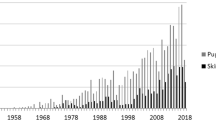Abstract
This paper proposes the use of Multiresolution Karhunen Loéve (MR-KL) analysis to analyse Galvanic Skin Response (GSR) Signals. GSR signal, which is considered the golden standard in peripheral neuro-physiological and psycho-physiological studies, can be represented by two functions representing either the large and small scale variabilities of the series. The large scale variability, related to the tonic component, is modelled by smoothing splines while the small scale variability, related to the phasic component, is modelled by a MR-KL expansion. The recognition of these two components in a real data set is mandatory in neuro-psycho-physiology and we demonstrate the efficacy of the proposed methodology by analysing a pilot experiment on a group of 13 subjects.
Similar content being viewed by others
References
Balram N, Moura JMF (1993) Noncausal Gauss Markov random fields: parameter structure and estimation. IEEE Trans Inf Theory 39: 1333–1355
Buchel C, Dolan RJ (2000) Classical fear conditioning in functional neuroimaging. Curr Opin Neurobiol 10(2): 219–223
Craven P, Wahba G (1979) Smoothing noisy data with spline functions. Numer Math 31: 377–403
Cressie N (1991) Statistics for spatial data. Wiley, New York
De Boor C (2001) A practical guide to splines, revised edition. Springer, New York
Di Battista T, Valentini P, Di Romualdo S (2007) Functional data analysis of GSR signal. In: S.Co. 2007. Complex models and computational intensive methods for estimation and prediction, pp 169–174
Ekman P, Levenson RW, Friesen WV (1983) Autonomic nervous system activity distinguishes among emotions. Science 221(4616): 1208–1210
Fontanella L, Ippoliti L, Mardia K (2005) Exploring spatio-temporal variability by Eigen-decomposition techniques. Invited paper at the conference in statistics and environment. Meeting of the Italian Statistical Society, 21–23 September 2005, Messina (Italy)
Huang HC, Cressie N (2000) Deterministic/stochastic wavelet decomposition for recovery of signal from noisy data. Technometrics 42: 262–276
Ippoliti L, Romagnoli L, Fontanella L (2005) A noise estimation method for corrupted correlated data. Stat Methods Appl 14(3): 343–356
Kakarala R, Ogunbona PO (2001) Signal analysis using a multiresolution form of the singular value decomposition. IEEE Trans Image Process 10(5): 724–735
Karhunen K (1947) Uber linear Methoden in der Wahrscheinlichkeitsrechnung. Ann Acad Sci Fenn (AI) 37: 1–79
Kostantinides K, Yao K (1988) Statistical analysis of effective singular values in matrix rank determination. IEEE Trans Acoust Speech Signal Process 36: 757–763
Kotzé HF, Möller AT (1990) Effect of auditory subliminal stimulation on GSR. Psychol Rep 67(3): 931–934
Learned RE, Willsky AS (1995) A wavelet packet approach to transient signal classification. Appl Comput Harmon Anal 2: 256–278
Liavas AP, Regalia PA, Delmas JP (1999) Blind channel approximation: effective chanel order determination. IEEE Trans Signal Process 47: 3336–3344
Lim CL, Rennie C, Barry RJ, Bahramali H, Lazzaro I, Manor B, Gordon E (1997) Decomposing skin conductance into tonic and phasic components. Int J Psychophysiol 25(2): 97–109
Lisetti CL, Nasoz F (2004) Using non-invasive wearable computers to recognize human emotions from physiological signal. J Appl Signal Process 48(11): 1672–1687
Loève M (1945) Functions Aleatoires de Second Ordre. CR Acad Sci Paris 220: 469
Macedonio MF, Parsons TD, Di Giuseppe RA, Weiderhold BK, Rizzo AA (2007) Immersiveness and physiological arousal within panoramic video-based virtual reality. Cyberpsychol Behav 10(4): 508–515
Mallat S (1998) A wavelet tour of signal processing. Academic Press, New York
Merla A, Di Donato L, Rossini PM, Romani GL (2004) Emotion detection through functional infrared imaging: preliminary results. Biomed Tech 48(2): 284–286
Ramsay JO, Silverman BW (2005) Functional data analysis, 2nd edn. Springer, New York
Shastri D, Merla A, Tsiamyrtzis P, Pavlidis I (2009) Imaging facial signs of neurophysiological responses. IEEE Trans Biomed Eng 56(2): 477–484
Silverman BW (1985) Some aspects of the spline smoothing approach to non-parametric regression curve fitting. J R Stat Soc Series B 47: 1–52 (with discussion)
Stone M (1974) Cross-validatory choice and assesment of statistical predictions. J R Stat Soc Series B 36: 111–147 (with discussion)
Tarvainen MP, Karjalainen PA, Koistenen AS, Valkonen-Korhonen M (2000) Principal component analysis of galvanic skin response. J Appl Signal Process 4: 3011–3014
Tarvainen MP, Koistinen AS, Valkonen-Korhonen M, Partanen J, Karjalainen PA (2001) Analysis of galvanic skin responses with principal components and clustering techniques. IEEE Trans Biomed Eng 48: 1071–1079
Unser M (1993) An extension of the Karhunen-Loéve transform for wavelets and perfect reconstruction filterbanks. Math Imaging SPIE 2034: 45–56
VanderArk SD, Ely D (1992) Biochemical and galvanic skin responses to music stimuli by college students in biology and music. Percept Mot Skills 74(3): 1079–1090
Vecchiato G, Astolfi L, DeVico Fallani F, Cincotti F, Mattia D, Salinari S, Soranzo R, Babiloni F (2010) Changes in brain activity during the observation of TV commercials by using EEG, GSR and HR measurements. Brain Topogr 23(2): 165–179
Walczak B, van den Bogaert B, Massart DL (1996) Application of wavelet packet transform in pattern recognition of near-IR data. Anal Chem 68(10): 1742–1747
Walker JS (1999) A primer on wavelets and their scientific applications. Chapman and Hall, CRC, Boca Raton
Zhai J, Barreto A (2006) Stress detection in computer users through non-invasive monitoring of physiological signals. Biomed Sci Instrum 42: 495–500
Author information
Authors and Affiliations
Corresponding author
Additional information
ITAB: Institute of Advanced Biomedical Technologies, Foundation University G. d’Annunzio.
Rights and permissions
About this article
Cite this article
Fontanella, L., Ippoliti, L. & Merla, A. Multiresolution Karhunen Loéve analysis of galvanic skin response for psycho-physiological studies. Metrika 75, 287–309 (2012). https://doi.org/10.1007/s00184-010-0327-3
Received:
Published:
Issue Date:
DOI: https://doi.org/10.1007/s00184-010-0327-3




